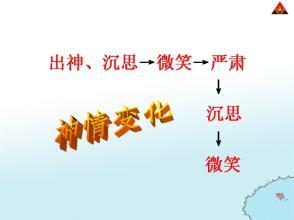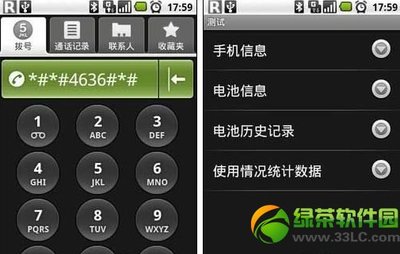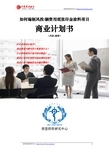《牛津高中英语》(江苏版)第11模块
第2单元Project中的阅读材料
Good morning, ladies and gentleman.Today, I feel honored to have the chance to share my ideas abouthow to teach reading.
In the reading process, I willfocus on students’ long-term development and enable them to useproper reading skills and strategies. In other words, students areguided to read efficiently and independently.
My teaching plan will include 3sections. They’re analysis of the reading material, identifying theteaching aims and teaching procedures.
Section 1 Analysis of theteaching material
The selected teaching material is amagazine article taken from the Project section of Module 11, Unit2 of Advance with English. The article is about Britishstudents who take a gap year, which is intended to develop thetheme of the unit, that is, Getting a job. After analyzingit carefully, I find the article has two unique characteristics.First, it’s a long passage with 688 words, much more than the usualtexts. Second, it deals with a new topic, that is, a gap year. Thetopic is unfamiliar to most students.
Section 2 Indentifying theteaching aims
Based on the analysis of theteaching material, I have chosen the following as the teaching aimsof my lesson:
The 1st aim: Studentslearn the skills and strategies to read a prolongedtext.
The 2nd aim: Studentsget a better understanding of what a gap year is.
The 3rd aim: Studentsare encouraged to figure out the implied meaning.
The 4th aim: Studentsare familiar with various expressions or approaches to express thesame thing or idea.
Section 3 Teachingprocedures
In order to achieve the teachingaims mentioned above, I decide to choose guided reading andTask-Based Teaching as the main teaching approach. With theteaching methods, I can guide students to use effective readingstrategies to comprehend the text, solve problems and completedifferent tasks. The teaching procedures include four parts.They’re getting ready, focusing on main facts, reading between thelines and responding the text.
Part 1. Gettingready
Reading begins before a book isopened. It’s important to activate students’ existing backgroundknowledge and draw their attention to the topic of the text. Inthis part, I will use the pre-reading activities to increasestudents’ concentration, arouse their curiosities, fire theirimagination and give them a purpose for reading. The part consistsof two tasks:
Task 1: A time machine. I start mylesson by asking senior 3 students what the date is. Then, I go onto show a picture of a time machine. I tell students that themachine with a magic power will bring them to their graduation fromhigh school, which is 1 year away. At that point, I get them toimagine where they are and what they are doing.
After it, I give a summary of theirpresentations as follows: After leaving high school, most ofChinese students go straight to university.Yes, at this time nextyear, most of you will be studying in a university.
(With the task, I inspirestudents’ former knowledge and imagination about graduating fromhigh school and going to college, which can draw their attention tothe theme of the reading material and get them ready for thefollowing reading.)
Task 2: Brainstorming. After thesummary, I go on to show some more pictures of British studentsfresh from high schools, and tell students that more and morestudents in the UK are doing something different instead of goingstraight to university. After that, I play the tape of Para.1 andget students to catch the answer to the question: They will travelor work on projects for up to a year before enteringuniversity.
(With the task, I excitestudents’ desire to know more about what their British equivalentswill do before going to college. With the question in mind,students will definitely be eager to listen to the tape to find theanswer. )
Part 2. Focusing on mainfacts
During the part, I will ask thestudents to answer the question—What does the author say? Students are supposedto get a main idea of the text and understand the basic meaning ofthe text. Questions of this kind are not very difficult and theycan be answered directly from the text. The part includes sixtasks:
Task 1: Three examples. I move onto tell students as follows: Last year, Carol Smith, Daniel andMartin Johnson, 3 students from the UK, went to some remote placesand did something special. After the instructions, I play the tapeof Paragraphs 4-6 and get students to complete the followingtable.
Who | Where | Activities |
Carol | ||
Daniel | ||
Martin |
(With the task, I get studentsto listen to the three paragraphs instead of reading them, thusreducing the amount of reading time and reliving theirpsychological burden, otherwise students would be discouraged bysuch a long article.)
Task 2: Matching. After listening,I get students to open books and scan the three paragraphs to checkthe answers to the previous table. Then they’re required tocomplete another table with a second reading.
Whom do theresults belong to? Carol________ Daniel________ Martin_______ A. felt being part of anotherculture. B. become moreindependent. C. found it challenging andrewarding. D. felt that it was a specialexperience. E. ready to face challenges in thefuture. F. learnt how to deal withdifficult situations. G. felt like she really made adifference. H. learnt a lot about getting onwith local people. |
(With the task, students learnto use a table to gather the main facts about the three Britishstudents. They’ll come to know that a table is of great help intheir future reading.)
Task 3: Scanning for a detail. Iget students to scan the rest paragraphs and find the answer to thequestion: What do people call the year off between finishing schooland starting university? In doing so, I introduce the theme of thearticle and write on the blackboard the title: Mind the gapyear.
(With the task, students areexpected to grasp the theme of the article. The task serves as abridge,which connects the main facts in Paragraphs 4-6 to theopinions about the gap year in the rest paragraphs.)
Task 4: Definition of the gap year.Students watch a VCR with a question in mind: What three types ofactivities do the UK students choose to do during a gap year? Thekey is: Many students use that time to travel, learn new skills orbecome a charity volunteer.
VCR 1:A gap is space between two things or a break inthe passing of time. However, a gap year is the time for studentsbetween high school and college, or college or graduate school.Many students use that time to travel, learn new skills or become acharity volunteer. Today, taking a gap year is growing trend amonginternational students. |
(The task serves as asupplementary to the second task of Part 1. With the task, studentsare expected to know more about the gap year.)
Task 5: History of the gap year. Iplay a second VCR and get students to answer the question: When didthe gap year start in the UK?
VCR 2:The gap year started in the UK in the 1960s.Large number of students used that time to travel. Over time,students did more than just travel. Some students worked part-timein their future career field so that they could get the jobtraining. Others did volunteer work, like teaching in Africa orhelping to protect the habitats in India. |
(The task enables students tohave a good knowledge of the history of the gapyear.)
Task 6: Comments. The second,third, seventh, eighth paragraphs deal with the comments of thegovernment, universities, employers and the public on studentstaking a gap year before going to college. I get students to readthe four paragraphs to gather the comments and complete thetable.
Comments on a gapyear | |
The British government | |
Universities | |
Employers | |
The widely accepted idea | |
(The task helps students get afurther understanding of the role a table plays in helpinggathering main facts or opinions.)
Part 3. Read between thelines:
In this part, I will encourage thestudents to answer the question—What does the author mean? As we know,information in a reading passage is not always stated directly.Sometimes students have to infer, or make guesses according theinformation which is available in the reading. So in this part, thestudent s are asked to infer the implied meaning, distinguish themain ideas from the supporting details and understand how the textis organized. The part consists of three tasks.
Task 1: Similar sentences. TheEnglish language enjoys various ways of expressing the same thingor idea. As we can see, the second and third paragraphs are similarto the seventh and eighth paragraphs in the content, both dealingwith comments on the gap year. Some sentences actually express thesame comments. I will get students to read the four paragraphs fora second time to find out the similar sentences.(The first is doneas an example.)
⑴It (a gap year) is more than justa long holiday. (Line 50)
A gap year is more than just ayear away from studying.
⑵Employers say they prefer to hiregraduates who have taken a gap year. (Line 15)
______________________________
⑶A gap year gives young people anopportunity to learn skills and gain life experience. It helpsyoung people develop and grow. (Lines 17-18)
______________________________
⑷Living away from home taught me tobe more independent. (Lines 22-23)
______________________________
(The task is designed to helpstudents learn and use different ways to express the same idea. Thetask gets students ready for talking and writing about the gap yearin the next part.)
Task 2: Guessing from the context.I get students to guess from the context the meanings of the fourwords or phrases:
⑴the career ladder (Line4)
________________________
⑵every point of the compass (Line5)
________________________
⑶delicate (Line 22)
________________________
⑷an edge in the job market (Line54)
________________________
(The task helps students torecognize that in most language-leaning situations they will comeacross vocabulary they don’t know. With the task, students areguided to look at the context in which a word or phrase is used andtry to find any clues to its meanings.)
Task 3: Benefits. Students areasked to collect advantages of taking a gap year in the text. Afterthat, students have the chance to listen to a third VCR, whichcontains more information about advantages. While listening,students are encouraged to take notes of what they cancatch.
□teach students to beindependent;
□help students develop andgrow;
□learn new skills;
□see life in a differentway;
□be ready to facechallenges;
□gain life experience
VCR 3:There are many benefits to take a gap year. It’sthe time when young people can get experience in the real world orexplore personal interests. Besides that, it refreshes them beforethe next stage of their education. Sometimes, a gap year can evengive people a clear direction and help them decide what to do next.It could be a new educational path or career choice. |
(The task is intended forstudents to collect more information about students taking a gapyear, which also makes them well prepared for the writing task inthe next part.)
Task 4: Recognizing the impliedmessage. I play a fourth VCR. While listening, students areexpected to fill in the two blanks:
Actually, a year off is not a gap,but a time for personal growth and d_______, a b______ between twoimportant periods in life.
VCR 4:Plans should be made ahead of time to dosomething meaningful with a gap year. There are several websitebooks and organizations that help students plan a good itinerary. Agap year is not just an empty space but a time to be filled withlife changing experiences. It doesn’t have to be a gap but a bridgebetween two important periods in life. |
(With the task, students willknow about how to plan a gap year and what taking a gap year reallymeans to them. It gets them ready for the next task.)
Task 5: Understanding the title.After reading the whole text, I will get students to focus on thetitle Mind the gap.
(The task is designed to helpstudents fully understand the hidden meaning of the title: They areexpected to make full of the gap year to developthemselves.)
Part 4. Responding to thetext
I encourage the students to answerthe question—What does the ideamean to me? As we all know, most writers are prejudiced in some wayand try to convince their readers of something, or influence themto look at things in a certain way. So it is important to trainstudents to read critically. The part consists of twotasks.
Task 1: I conduct a survey to seewhat students think of taking a gap year and at the same timecomplete the table.
A survey among_______ students  about a gapyear | |
For | Against |
Reasons: 1._________ 2._________ 3._________ | Reasons: 1._________ 2._________ 3._________ |
Your own choice:______________ At least 2 reasons: 1._________ 2._________ | |
(The task is aimed at makingstudents become critical readers.The students should be encouragedto evaluate and make judgment about the author'stext.)
Task 2: After the survey, studentsare asked to write a composition of 120 words about their ideas oftaking a gap year before going to college.
A survey was conducted among myclassmates about taking a gap year before going tocollege._________________________________________________________________________________________________________________________________________________________________________________________ |
(The task aimsto consolidate the information they have learnt and also improvespeaking and writing skills.)
OK, so much for my teaching plan.Thanks for your attention.
附件二:阅读材料
1 Traditionally, a student leavingschool at eighteen would go straight to university and study forthree or four years before joining the world of work and beginningthe slow climb up the career ladder. However, this year, like lastyear and the year before, thousands of young people will travel toevery point of the compass and work on projects for up to a yearbefore returning to the UK to enter university. They could work asan English teacher in Vietnam or perhaps even work in a naturereserve protecting kangaroos in Australia or zebras in Africa. Infact, these young people can now be found nearly everywhere in theworld except the Antarctic.
2 This year off between finishingschool and starting university is known as a gap year. It is morethan just a long holiday. The British government is now providingfunds to some young people to help them take a gap year.Universities actively encourage students to take a year off beforeentering university, and more and more employers say they prefer tohire graduates who have taken a gap year rather than those who stayin the education system and go straight from school touniversity.
3 The reason for this preference issimple. A gap year gives young people an opportunity to learnskills and gain life experience, which school or university cannotprovide. It helps young people develop and grow.
4 Last year, Carol Smith went fromthe UK to Brazil, where she worked on a project to help save theAmazon rainforest. She said, ‘My friends always thought I was toodelicate, but living away from home in such a remote place taughtme to be more independent. Of course, I missed home and only gotletters through airmail, but I’d definitely recommend it. I feellike I really made a difference and helped conserve therainforest.’
5 Another student who chose to takea gap year, Daniel Jones, spent one year teaching in Ghana beforereturning to the UK. He taught English and math to poor studentsfrom rural areas. He found living among local people there to bechallenging but rewarding. ‘Families there are so poor that theydidn’t even have basic things like refrigerators or kettles. Infact, they didn’t have any electricity. At night, we couldn’t justhit a light switch; we had to use a flashlight or an old oillantern to give us some light. After living in such conditions, nowI feel I’m ready to face challenges in the future.’
6 Martin Johnson is from the UK andhelped build a school in a poor part of India. He said he wanted tolearn how to deal with difficult situations. Explaining how theymade most of the school’s furniture, he said,’ we had some wood,nails, hammers, a few spades and a lot of hard-working people.’Martin said he had learnt a lot by working with the local people,‘I helped people harvest their crops before they rooted, which wassomething I had never done before. It was very special, being partof another culture.’
7 For many students, a gap yearteaches them how to work with a group of strangers and how to lookafter themselves without the help of family or friends. These areexactly the sort of skills employers are looking for. Nowadays,they expect young people to have more than just academicqualifications. Mr. Biggins, the CEO of a major finance company,welcomes the extra experience that a gap year can bring to graduatetrainees. ‘We usually find that students who have been on a gapyear are more capable of working independently, and they tend towork better with colleagues from different backgrounds.’
8 It is now widely accepted that agap year is more than just a year away from studying. It is a timefor personal growth and development, learning new skills and seeinglife in a different way. When students start university, they areenthusiastic and very motivated. As well as having a good time andmaking new friends, doing a gap year may give students an edge inthe job market.
 爱华网
爱华网


